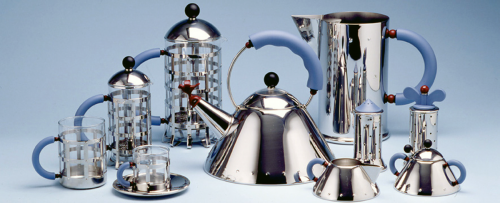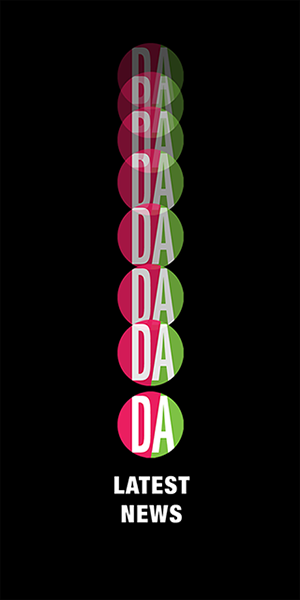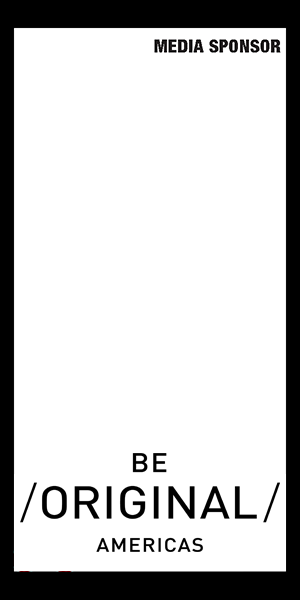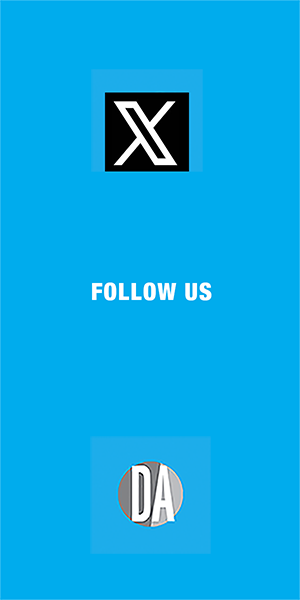l>r: giovanni alessi | alessio | paolo cravedi | in front of raleigh hotel
We are sitting outside the Raleigh Hotel in South Beach watching the doorman turn away throngs trying to gain access to the hotel and an Architectural Digest party just starting. A common happening with all the hotels along this strip. After all, this is late Friday afternoon, Design Miami/ week. Among a number of us sitting at our table is Alessio Alessi, president of Alessi USA, who is here for Design Miami/ and more importantly, to formally open a new retail store Alessi Miami, which is located in the Design District. Also with him is Paolo Cravedi, managing director, Alessi USA, and Giovanni Alessi, a fourth generation Alessi, a product designer, and Alessio’s son.
 bombé teapot | carlo alessi | 1945.
bombé teapot | carlo alessi | 1945.
[DesignApplause] Alessi has a great business history beginning in 1921. And congratulations, Alessi is celebrating 90 years. How do you describe Alessi the business today?
[Alessio Alessi] Today’s business is a lot different than the business started by my grandfather in 1921. Different because in the beginning the company mainly focused on high quality production. But we began collaborating for the first time with outside independent designers who provided us with solutions that make Alessi what we are now. The first collaborations started in the 70s, in fact with Franco Sargiani and Ettore Sottsass, when Alberto joined the factory. Today Alessi now represents one of the top Italian industries representing design. Our area of specialization is the everyday object for kitchen and table mainly.
[DA] Design is increasingly viewed as an important strategic resource. Nevertheless, only a handful, Alessi is one of them, has truly mastered the design-driven approach to innovation in which design is the central part of the business. What ingredients within Alessi make this possible?
[AA] Well I think that the most important ingredient, if we can say that, are the passionate individuals that bring design into Alessi. This relationship feeds into our main goal to create beautiful objects through design and to try to respect the objects as much ( 100% ) as possible without compromise to the industry or to production. Even if a design solution is difficult or is expensive to make, we prefer to respect the original idea of the design and not change the design idea just to feel better about the cost of production or the easy solution.
[DA] Alessi collaborates with over 200 designers. What is asked of the designer? In addition to styling, is it technology, or product meaning or product message, or a concept that is greater than functionality?
[AA] That is true, in our catalog, we can now present the work of over 200 designers coming from every part of the world. Sometimes we ask for a mechanical solution, but what is more important for the success of the product and of the design is to find the right designer that brings to Alessi an answer that addresses a need of society, meaning the end user. We realize that the designer is independent of the company and they have a good and objective grasp of society’s needs. So now Alessi is able to present answers to those needs with regards to products. And our reach of answers is worldwide because of our designers who are worldwide.
 juicy salif citrus juicer | philippe starck | 1990
juicy salif citrus juicer | philippe starck | 1990
[DA] Speaking of the world, we are all experiencing economic woes right now. Is this distracting to Alessi? Are you forced to place mostly price-sensitive solutions on the drawing table? Is there a role for design to play in this challenging economy?
[AA] You’re right. There are big troubles, not only in Italy but mainly in Europe itself. And Italy represents the 3rd richest country of the European community. And if the problem cannot be solved in Italy it’s going to be a big problem for everyone. In reality, it is not possible for design to change the economic climate. But it is important for design to make the object more understandable, more friendly for the people, than it has in the past. The goal of Alessi in an economic crisis is to try to respect this climate and make the product as accessible as possible and also to try and produce the product locally. That’s because Alessi is located in a small town, and Alessi represents a very big role within this small town. One way is to make the design more affordable and the designer has that responsibility without compromising the value and goal of the project.
[DA] Does Alessi still make their limited edition products, the high-end objects?
[AA] Yes, we still produce them. Sometimes, not always, as limited editions, and some are in the catalog. Typically, because of the complexity of production of these products they can only be made in an artisan way, and these really become collections for collectors, a segment that has value to the Alessi brand.
[DA] With over 2,500 objects, I laugh each time I see the Mr. Suicide bath plug. Alessi is a leader in presenting those objects that holds an idea and a semantic dimension, a language component that goes beyond color or shape and speaks not only to function but user desires. Swatch did this in 1983, transforming a timepiece into a fashion accessory. Alessi has a well-known line “Family Follows Fiction” consisting of colored-plastic kitchenware products. The color and transparent plastic may convey product meaning such as irony and a sense of childhood. And yet this doesn’t improve product performance. Does Alessi frame concepts and products in innovative settings to capture the end user imagination?
[AA] In many ways. Let me say that irony is a very important element in our objects. Irony is just one language, where there are many different languages ( meanings ) you find in our catalog. Each object, each design is free to speak the language it wants. The first designer we worked with was Ettore Sottsass in 1978, and he told us a very important word. That word is responsibility. He said Alessi has a very high responsibility in manufacturing because we put objects in people’s homes. And the people come face-to-face with the objects all the day and the objects must have a good communication with them. So the object must be able to communicate, not to be boring by only representing a functional aspect but by also representing an emotional aspect. This communication, of course, is expressed differently by each designer. As you suggest, there is irony, expressed more minimally with a designer like Jasper Morrison’s language for example. And there are many languages. It is important to point out that this expression is an unimportant characteristic of the job we ( the company ) do because we’re not focused on presenting one style but on presenting many different languages of design being communicated by our designers.
[DA] How is a designer selected? Let’s say you have recognized a need, an object that needs to be created. Do you ask several designers and then select what you feel is the best solution?
[AA] When we are ready for design we know already which is the right designer for the object. Except, on occasion, working with the young designer. In that case we organize a workshop with a group of young designers and each one makes their own proposal. But when working with the young designer there can arise many more difficulties to bring an object to production.

michael graves | first american designer | 1985
[DA] How does failure fit into the creative equation? I’m led to believe Alessi almost embraces failure, that it can be important in a learning process way. How do you define and evaluate success and failure? What products live and what products die?
[AA] It can be complex. It’s true that failure can be useful for our job. I have to tell you that my brother, Alberto, who is by the way responsible for the choice of the designer. When he begins to first talk about Alessi, he mentions his first project that was a failure. Why does he do this? Because in life, failure can lead to better understanding and he believes you take something positive out of the process to be better later on. Failure can also happen because design can sit on a borderline between creativity on one side and the needs of the people on the other. Sometimes following creativity we arrive at a solution over the border meaning not everyone can like it. We can accept that because it’s possible without this experience, we could not make those objects, some that are icons, available in our catalog as they are now. Failure is a risky part of creativity but we like that.
The second part of the question is about the life of a product. We end the life of a product when it is no longer possible to make the product in an economic way. But that said, we try to keep those products in the catalog that are successful economically and those products that are successful communicating to the people. Of interest, there are some products that are no longer in the catalog but reside in the homes of architects and designers which still can make a very important high quality of communication.
[DA] A non-creative question. What portion of your sales comes from new products and what is the average life of a product?
[AA] Every year we introduce to the market 40-50 new products, introducing new collections twice a year; Fall/Winter and Spring/Summer. And these products represent 10-12% of our total products. The life depends a lot upon the product. There are some products in the catalog that are older than me. And there are pieces in the catalog that stay just two years.
[DA] I felt the full range of your product line on the internet. How does the Internet…
[AA] Ah, ah, ah. The Internet ( Alessio means their Website ) is no good! Let me clarify. We don’t like our present Website and we’re working on it and will be up in April 2012. This is a pity in my eyes because we have so many things to communicate about our product and there seems no way to succeed. For sure, not in the independent shops where there is not enough time to explain to the consumer the design problems, the solutions. Even the people walking into our shops have a difficulty learning about our products. But we are trying and the Website is the right media to communicate and educate.
[DA] A little about you, Alessio. When did you start thinking about what you wanted to do when you grew up and were there any the other options of great interest?
[AA] There were no options. Let me explain. When I was very young there was the family and the work, the business, all together. My father would take me into the company and I was always looking around, looking at the production, the logistics, the offices. There was really no discussion what to do in the future because we were focused to come into the company. Today that is the opposite for the fourth generation ( Alessio is third generation ) because they are free to follow the path they think is better for them.
[Giovanni Alessi] It is also difficult if you are free to do whatever you wish to do in your life because at that point you are in the middle of the desert. Or in the middle of the sea with the sails up. But in a way it is a good approach because the third generation has given us this opportunity to find our passion, and to follow it, and to see if it’s connected to the family business. And from which way, from inside, from outside the company.
[DA] Giovanni, you’re a very brave man. You were raised within a company that works with over 200 elite designers and you choose to jump on that same stage.
[GA] I am working as a freelance designer from outside the company. I am enjoying the business from the outside.
[DA] The best of both worlds?
[GA] From my point of view it is even more difficult because you are part of the family. In a way you can easily share your ideas and your products, but the third generation is really careful about considering them. It must be a really good product.
[AA] We are coming back to a question you said before. You are totally free to make failures.
[GA] You are free in word, but from inside psychologically, you don’t allow yourself to fail too much.
[DA] What are you designing? Anything that Alessi produces?
[GA] I work with Philips, designing audio speakers, a mouse, a laptop cushion, a laptop sleeve. I am working with other companies but I do have to be really careful on what typologies of products I’m designing. I do not design plates or glasses for other companies. It’s the formula I work within and it can feel delicate.
[DA] Alessio, regarding art, craft, design, business, how do these disciplines behave in your mind, your world?
[AA] I feel that all live together. What we used to say is that our role is to put art and poetry in the object. Not as a spice, a condiment to add to something, but they are a part of the object. So art is very important, because it’s kind of an answer to the need for art and poetry of the people. Not many objects possess these qualities.
[DA] What’s left for you to do?
[AA] Hmm. What in working or vacations? Seriously, I always care about the distribution of Alessi. This, in my eyes, is very important to bring objects, design, to the people. We can find ourselves in the position which can be a contradiction, because as we converse here, we are talking both about art and about business. We have to find the right balance and combination. And with design being our passion we try to do it with all the forces we have available to us.
[DA] What’s next for Alessi?
[AA] There is a lot new going on with Alessi. Let me think. Here’s something. What’s really new for our typology of products, we will introduce within a commercial exhibition the introduction of new lamps. So we will soon make a little step inside the world of the luminaire.
[ the alessi brands ]
“Three collections, one identity” Alessi offers contemporary design in different product types, styles, and price levels under the following three brands:
>The brand “OFFICINA ALESSI” features products that are more refined, expensive, experimental and innovative, with small production runs and limited editions.
>The brand “A di ALESSI” presents what we call “democratic” design; the best in design at an affordable price.
>The brand “ALESSI” expresses the finest in large scale industrial production in the houseware sector; both in terms of the quality of manufacturing and design.
[ alessi ] [ alessi miami ] [ design miami 2011 ]









